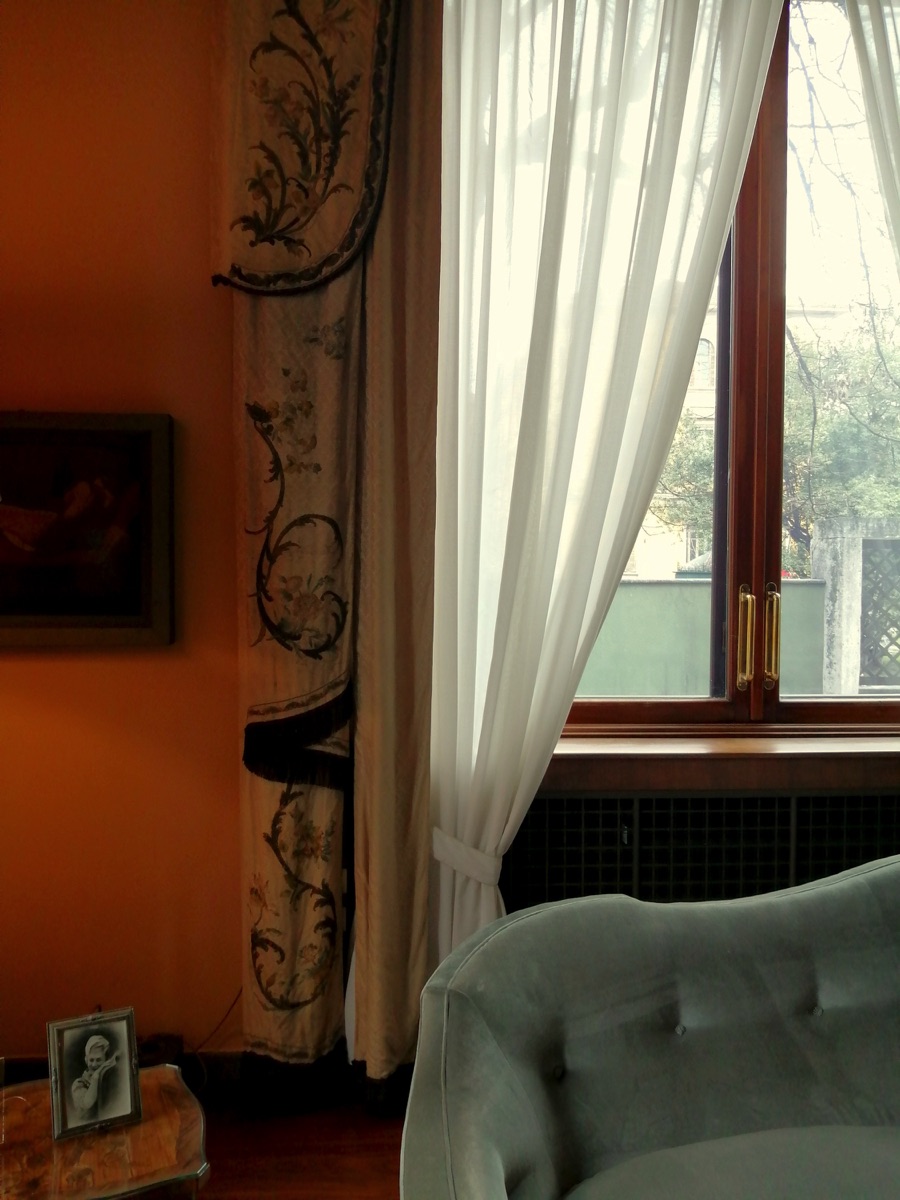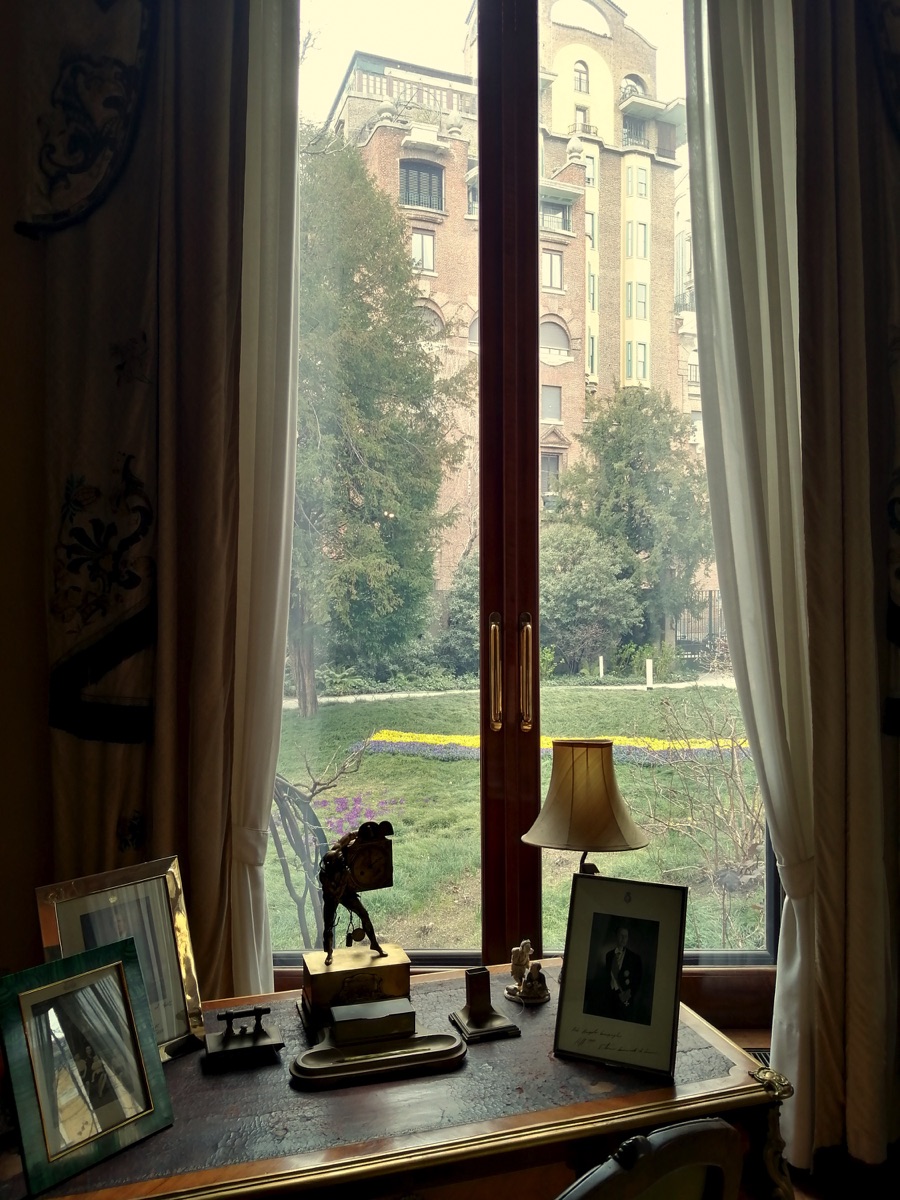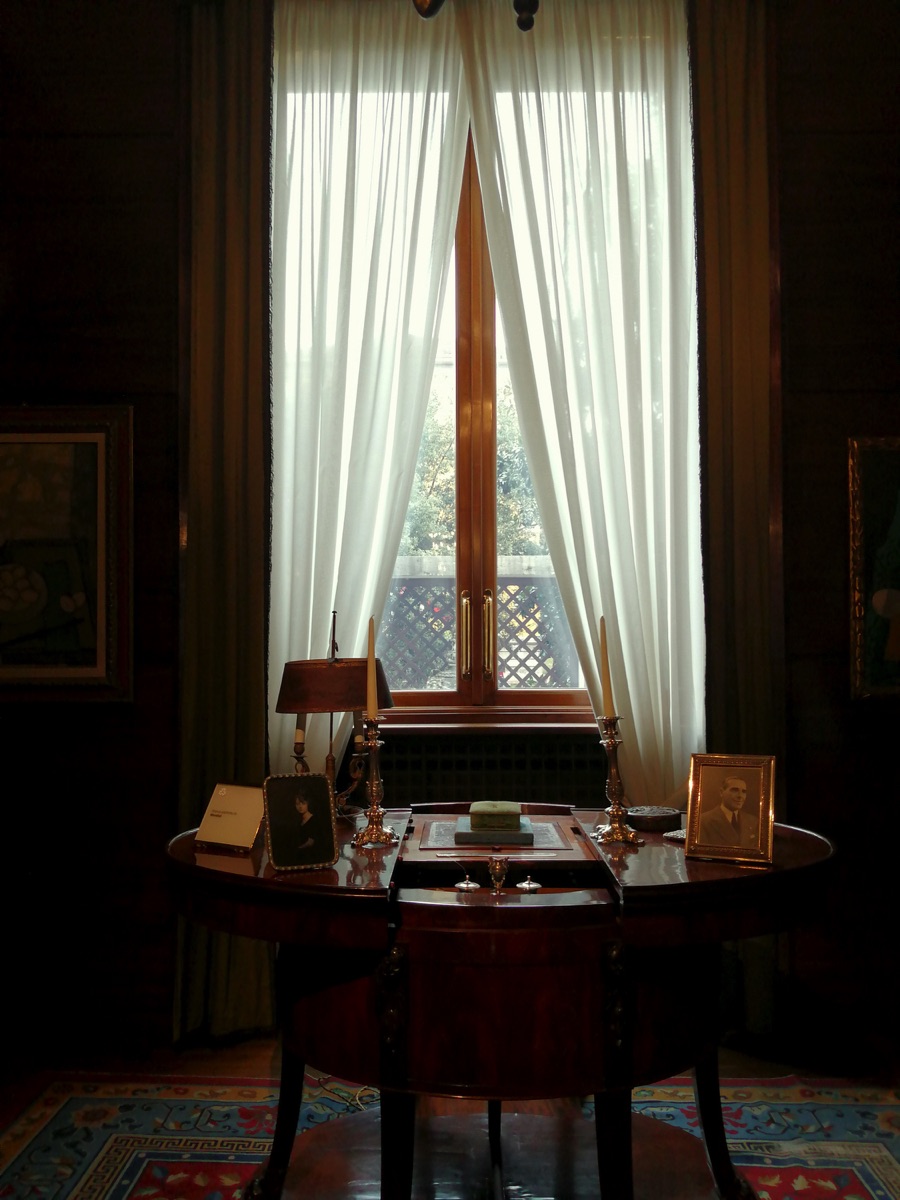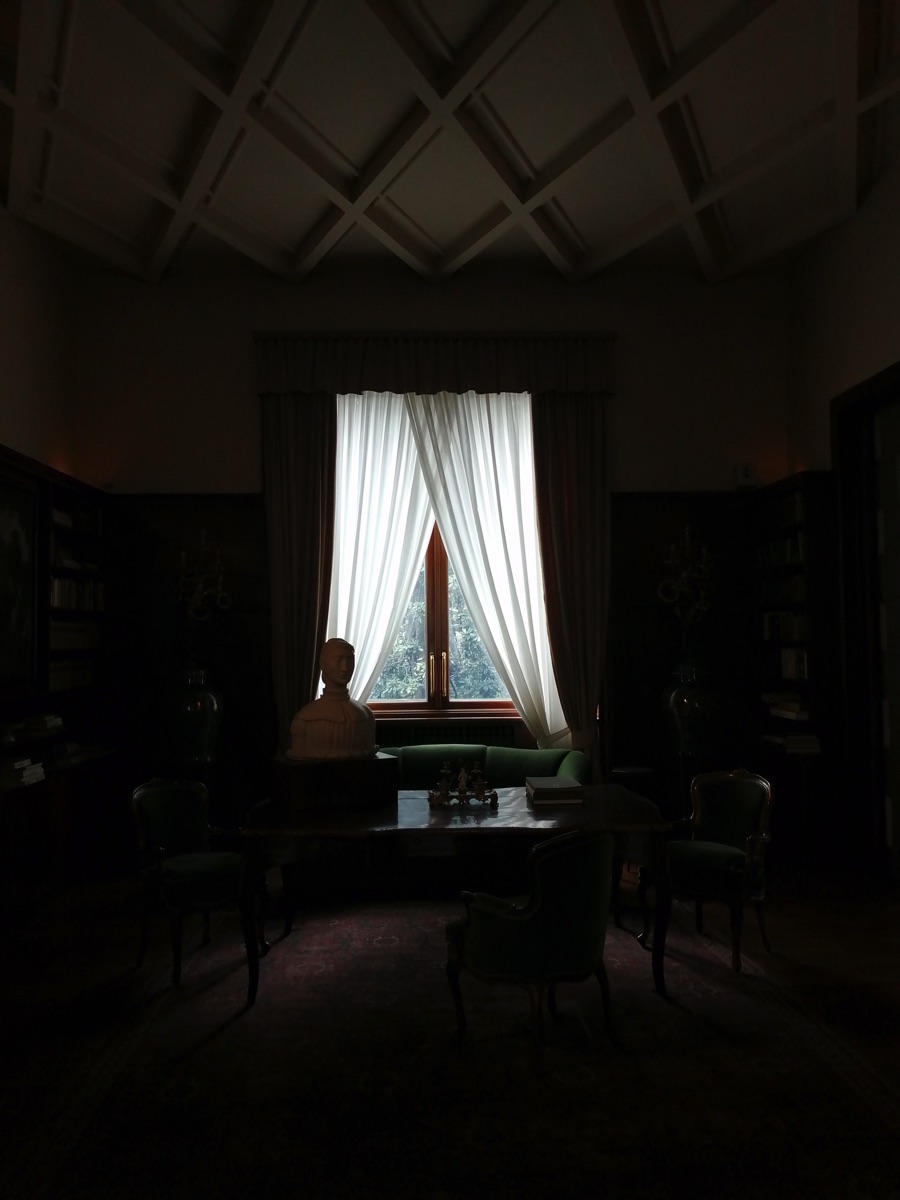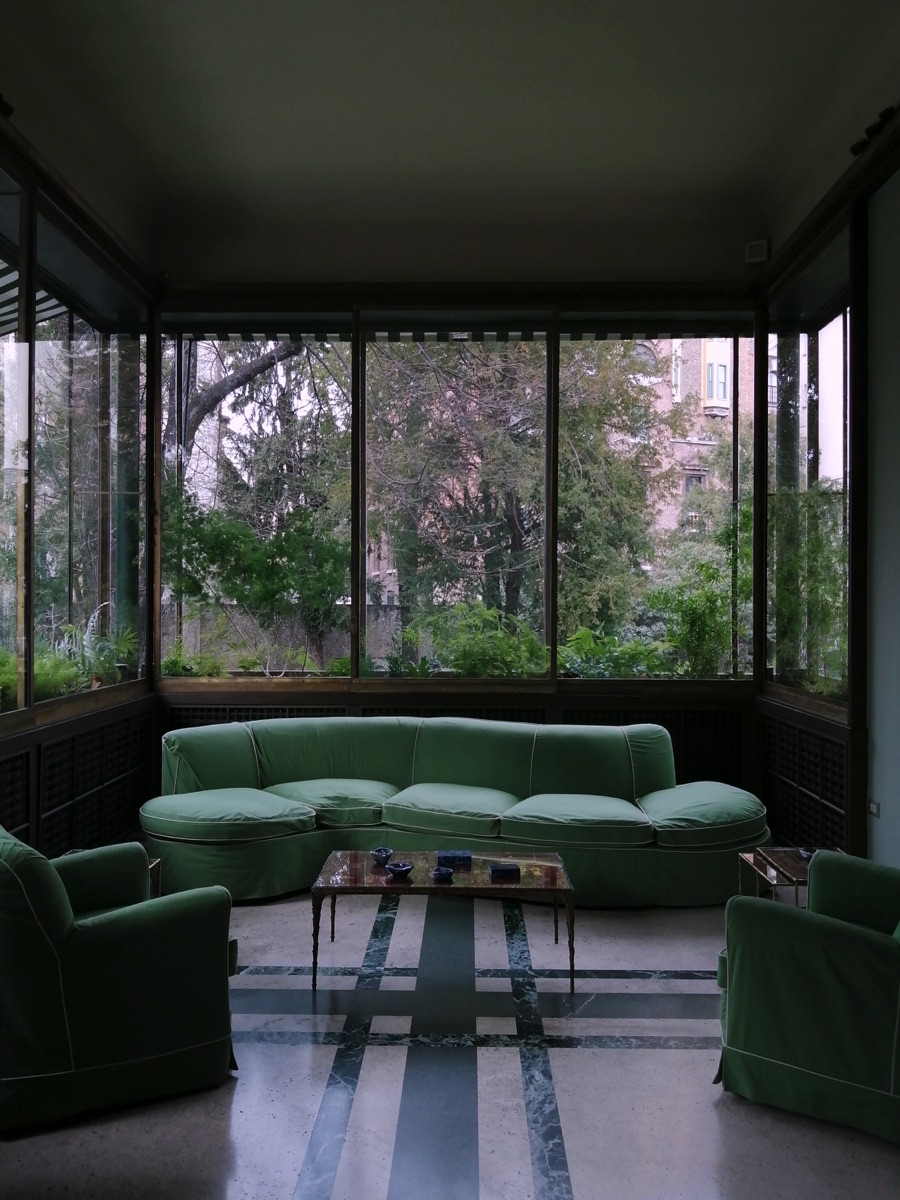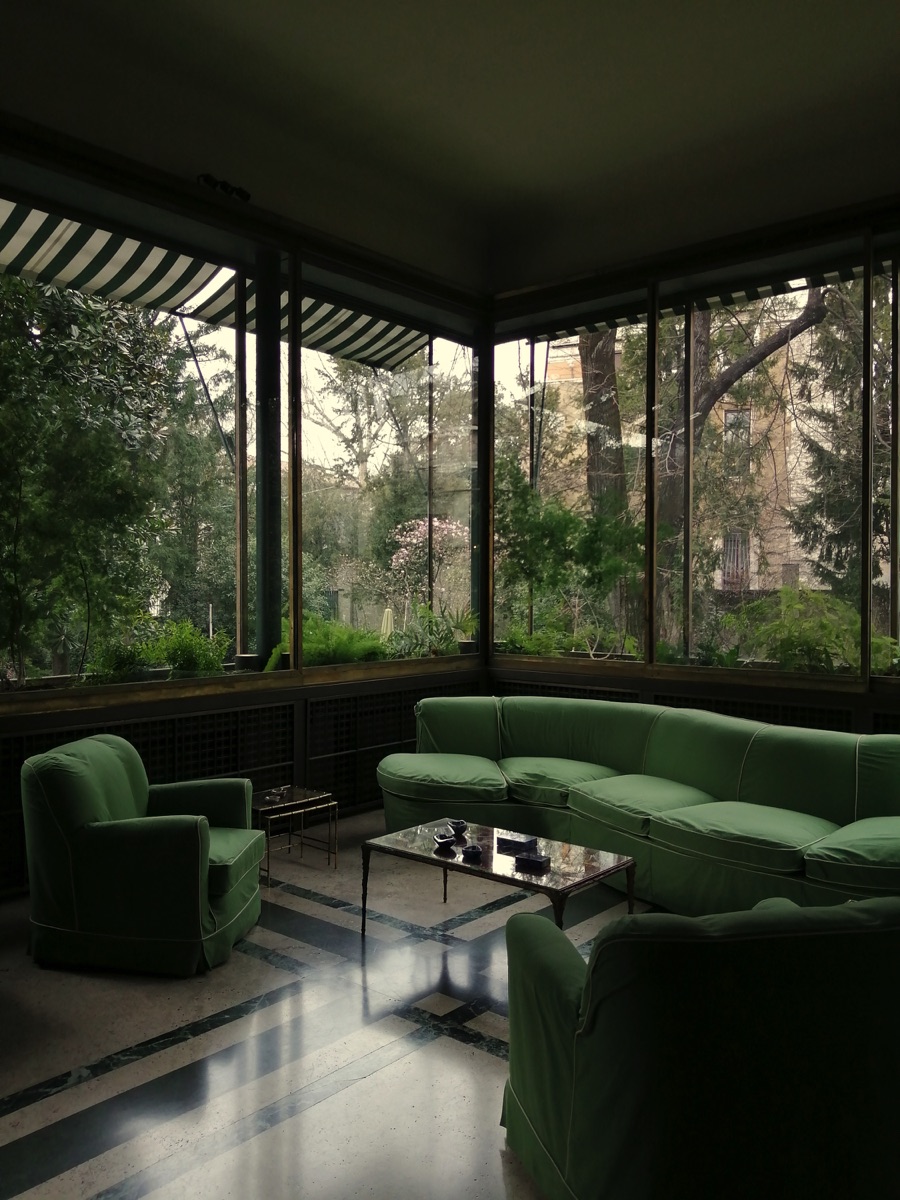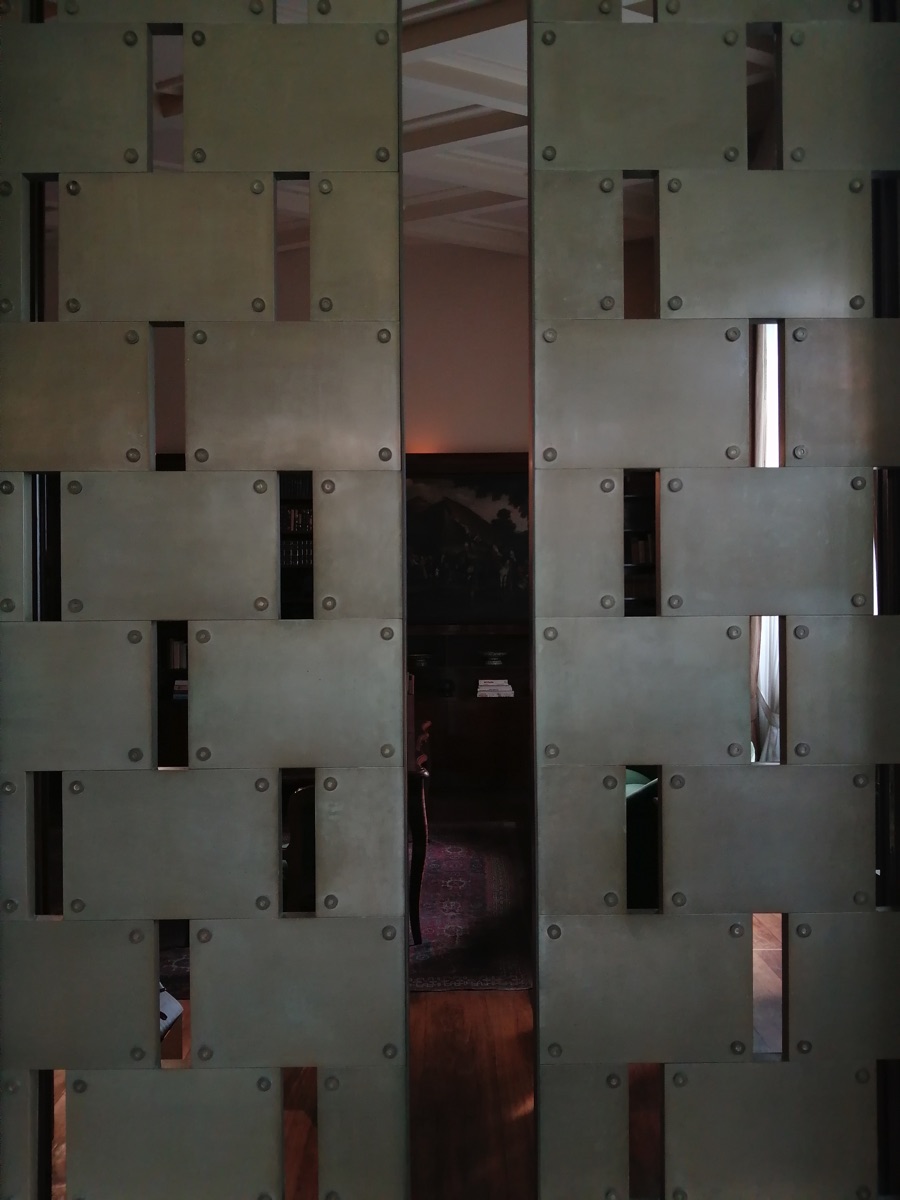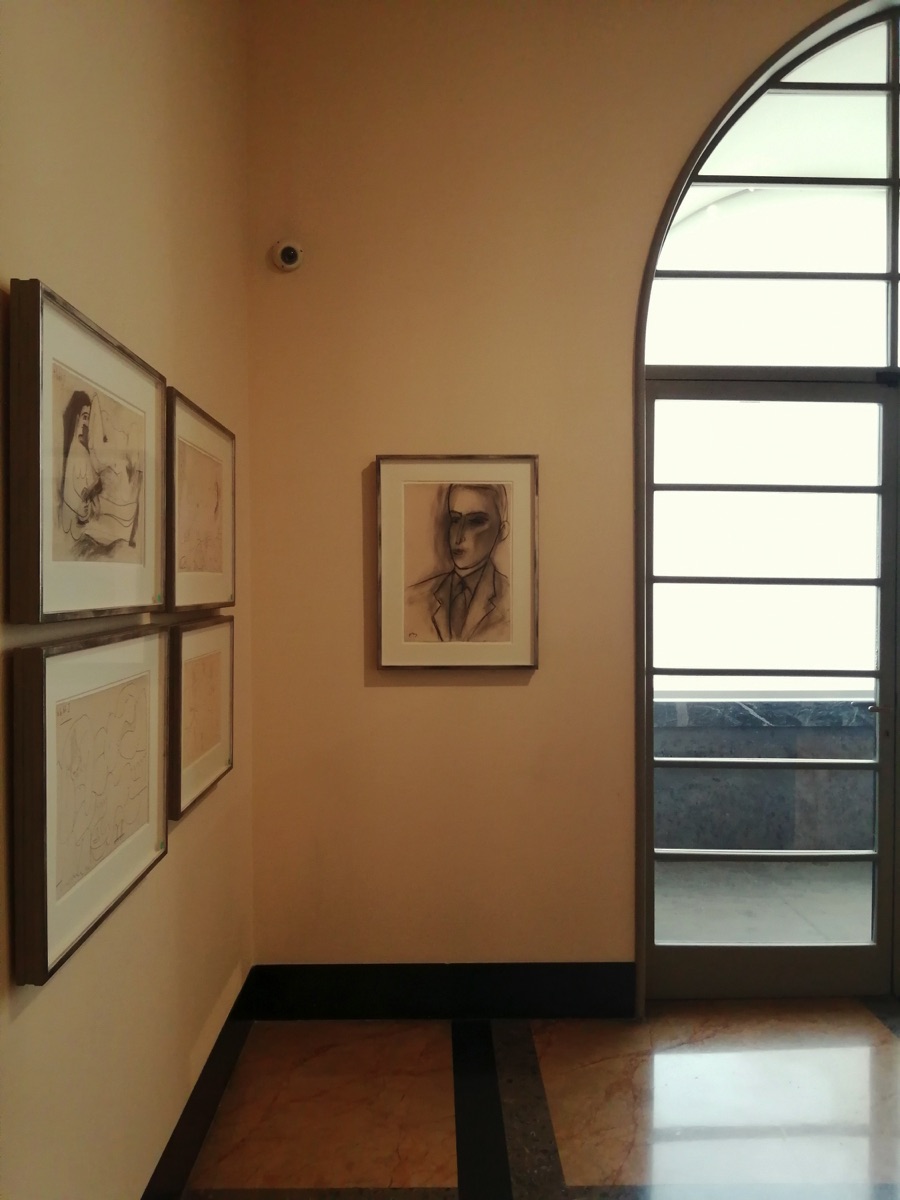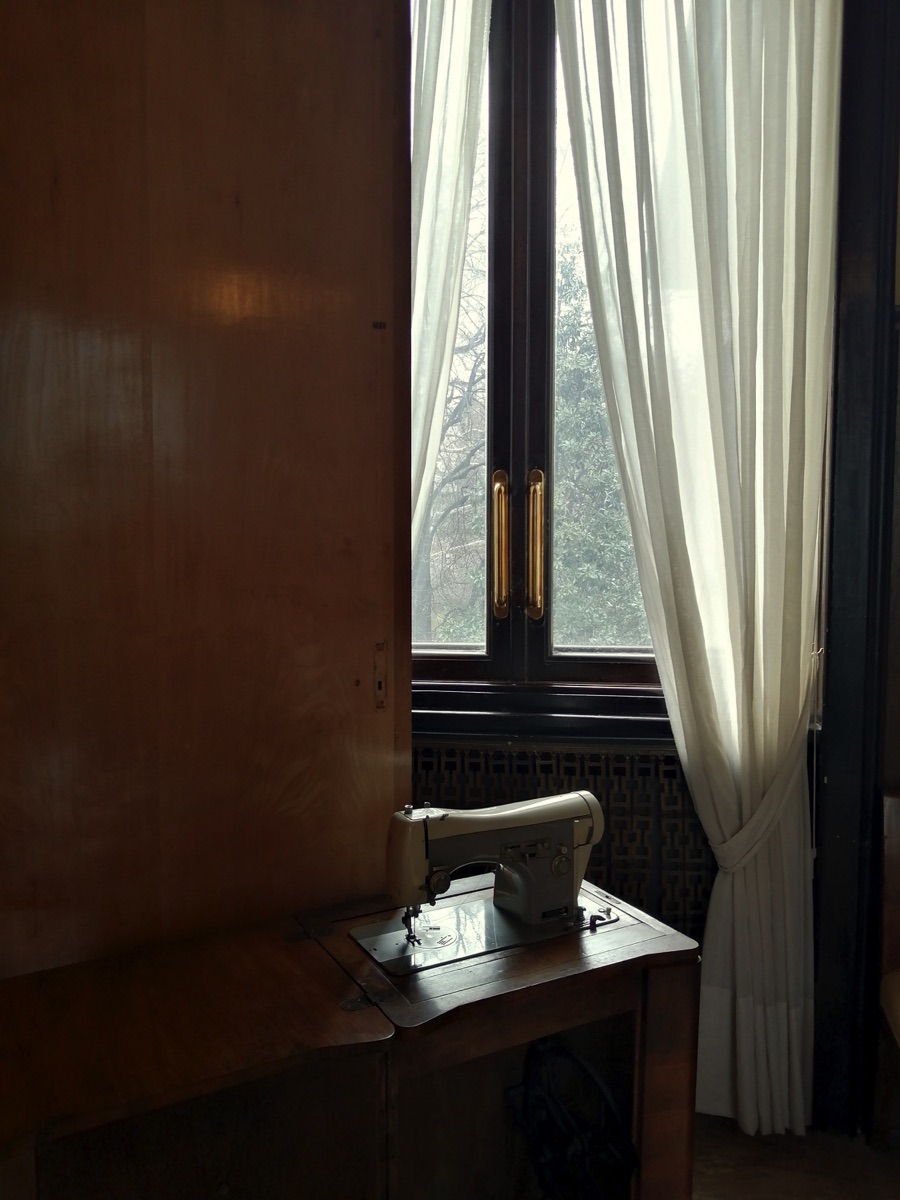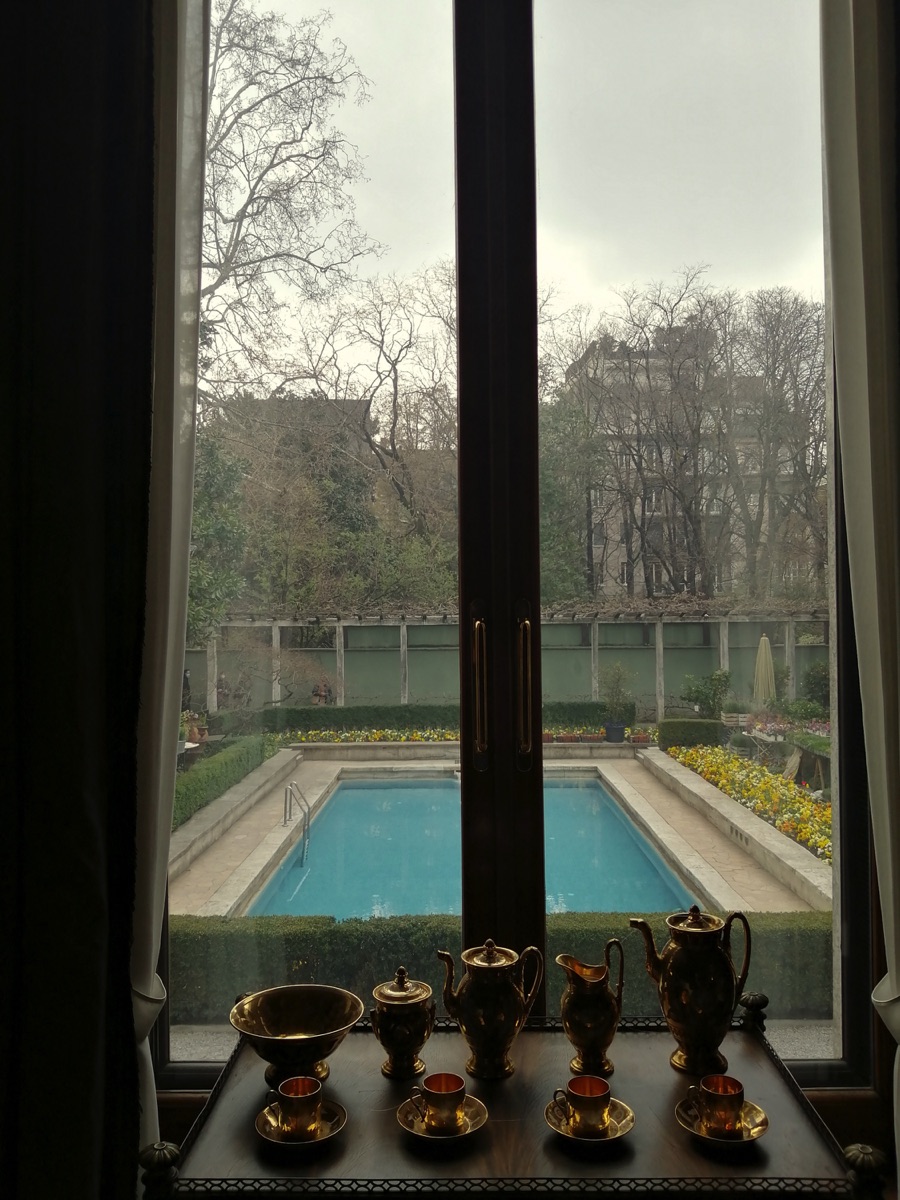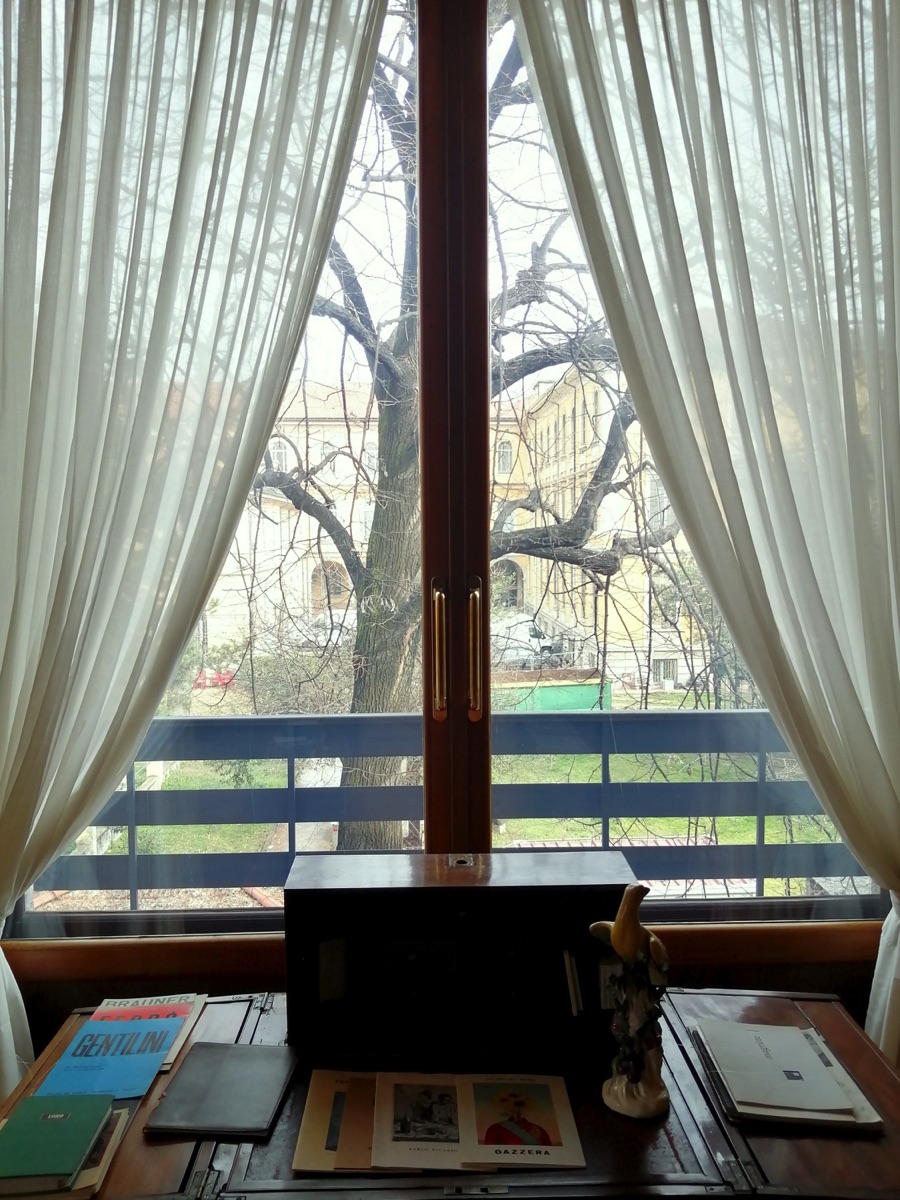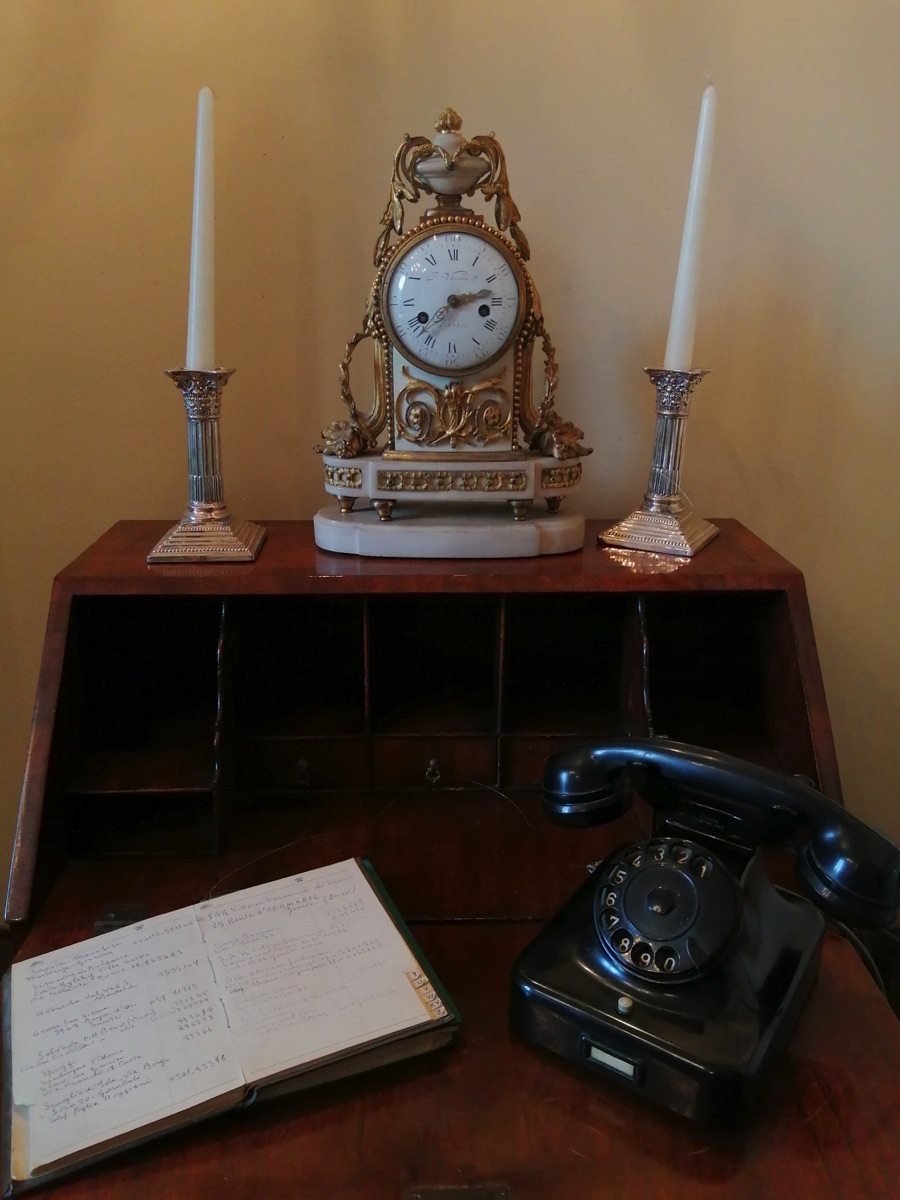
Surrounded by a large private garden of trees, ferns and magnolias, with a swimming pool and a tennis court, Villa Necchi Campiglio is one of the of historic homes, “museum houses” in Milan. Located in Via Mozart 14, the Villa embodies the rationalist style prevailing in those years, with elements of art deco. It was designed in the early 1930s by the architect Piero Portaluppi, commissioned by sisters Nedda and Gigina Necchi and by Angelo Campiglio, husband of Gigina. Later, starting in 1938, renovations in the external garden and the refurbishment of some furniture were made by the architect Tommaso Buzzi. The villa was donated to FAI by the Necchi sisters as they had no heirs.
The Necchi Campiglio family, active in the industrial production and sewing machines sector, was known for the frequentation of illustrious personalities and for the appreciation of great art, as well as because of some extremely generous actions. In this regard, it is worth mentioning the fact that the proceeds from the sale of some works of art from the Necchi collection were donated to the European Institute of Oncology founded by Umberto Veronesi. The proof of the owners’ good taste and hospitality is palpable inside the villa: the paintings, porcelains, sculptures and fine furnishings, purchased during their life, show how the time spent inside the house had a cultured and dreamlike quality to it, different from the rhythm that took place outside the walls.
The shape, the volumes, the spaces that were chosen clearly redefine the owners’ cult of beauty, which is never excessive or brazen, their refinement of thought and their foresight, their positioning in eternity, beyond time as an historical era.
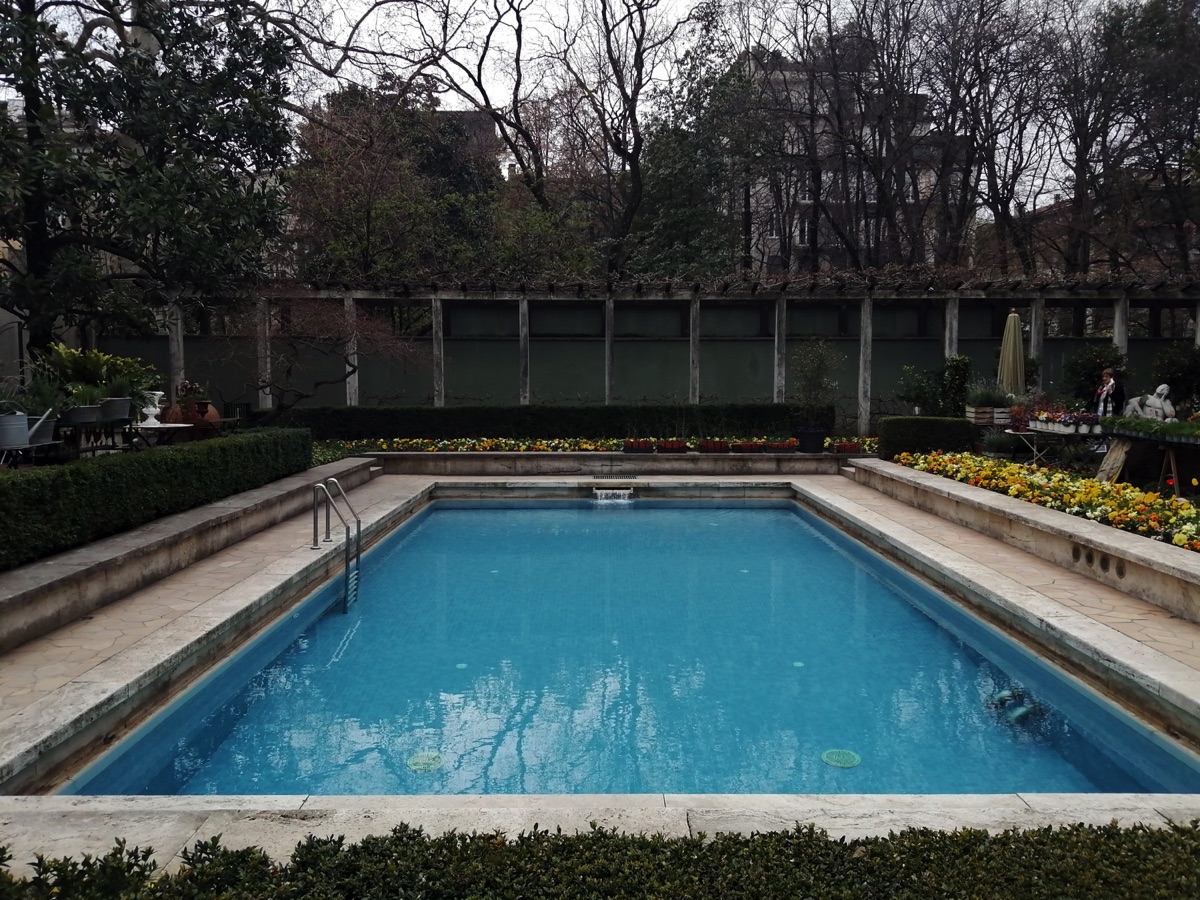
To welcome guests and visitors, the sculpture “The dead lover” one of the most significant works by Arturo Martini, is located in the atrium and it was donated by the art historian and gallery owner Claudia Gian Ferrari to the FAI. The layout of the interior spaces responds to the traditional division of noble residences: living area on the first floor, bedrooms upstairs, service rooms in the attic and play rooms in the basement, together with the changing rooms and bathrooms for the swimming pool.
Large areas were intended for receptions and socializing: the dining room, the Fumoir, the Library and the Hall are enriched with works by early twentieth century artists, including Giacomo Balla, Umberto Boccioni, Filippo De Pisis, Carlo Carrà, Giorgio De Chirico, Giorgio Morandi, Mario Sironi and the famous sculpture in serpentine pose Il Puro folle (Parsifal) by Adolf Wildt, located in the Winter Garden.
What is fascinating when visiting houses and, in particular, places steeped in history that are about to be entered is the almost mystical light and silence, a smell that prepares to listening, a poetic form of space. The echo of the steps taken and the voices remains in the walls and in the wood of the surfaces, it seems to have “rested” on the furniture, the result of the wise thought of fine cabinetmakers, in an intimate relationship between past and present. The choice of materials, furniture, armchairs, backrests and fabrics, the way of positioning them reveals a research that always consists in a “transmission of knowledge” and has to do with the emotions of those who make these choices: the greatness of spaces and windows in the sign of openness and protection at the same time; the way light enters and bathes things, sealing feelings and encounters, making alliances.
Could you tell me why the sound of some footsteps is heard with the heart, as if the heart could hear?
(Giovanni Verga)
